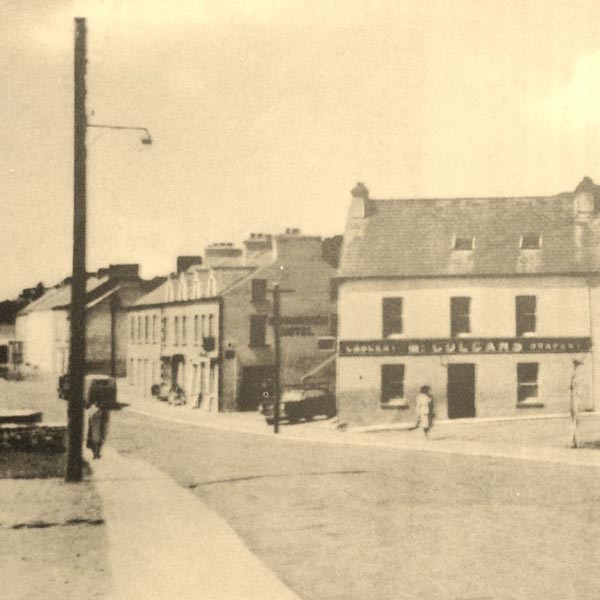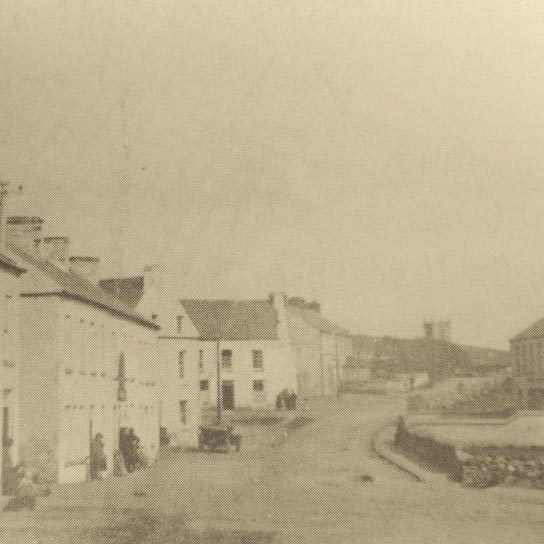History of Glen House

The Glen House – History
Originally part of the Dresden demesne the Glen House dates from the late 18th century. Dresden, a beautiful mansion on lush pastures near the old Church was built by the Rev. Daniel Mc Laughlin, Rector of the Established Church from 1672 until his death in 1711. The estate and other properties in Inishowen were then acquired by the Clarke family, wealthy landowners from County Armagh. Walter Clarke bequeathed land to his daughter, Elizabeth, on her marriage to Dublin barrister John O Donnell and they built the present Glen House, a five-bay, two-story house with a segmented fanlight. The original site from c. 1766 had a bathing lodge used by Elizabeth and her siblings when they holidayed there as children.
O’Doherty Landlords
About 1770 an English man, call Charlton became the landlord of Urris and he soon got an agent, local man Neal Sean Doherty. His wife Rebecca was a nurse with the Charltons. Later a daughter of Charlton’s – a Miss Merricks – became the owner. She lived in England and Neal Sean was the sole agent; he lifted rents and “cuts” ( rates ) and later became tithe proctor. Neal soon became a rich man himself. He bought the estate in the early 19th century and set up as landlord at Glen House. Micheal Doherty, Neal’s son, later took over the estate, settled into the Glen House with his family, and became a landlord himself. Originally a Catholic, Micheal and his family became Protestant after a row during the Tithe War in the 1830s with the Waterloo Priest, Fr William O Donnell, P.P Clonmany. From that time Michael and his family attended services in the Church of Ireland, Straid where the family continued as patrons until the early 20th century. The O’Doherty Landlords are now buried in the nearby graveyard at Straid Church.
Glenfield 1914-18 World War 1 Camp
The Glen House, rented from the O’Doherty family, became the administrative headquarters of Glenfield Camp. In August 1914 on the outbreak of war, the British Government began enlisting young men and quickly set up camps to train these new recruits. Clonmany, with proximity to established military Forts at Leenan and Dunree and access by rail to Derry via the Lough Swilly Railway, was an obvious location. On November 4th the Royal Inniskilling Fusiliers came to “Glenfield”, the new camp by the Glen House – only two stone pillars on the roadside now remain to mark the entrance to the field. Galvanized huts, mounted on concrete blocks, were laid out in rows from the road to the top of the field to accommodate upwards of 1,000 recruits and military personnel. Water was piped from the Glenevin River nearby.
Land Commission
In the 1920s the O Doherty estate was taken over by the Free State Government and the Land Commission divided the land among local tenants. The Glen House was bought by John Doherty, the Principal of Tiernasligo N.S. who raised his family there.
In the 1960s the Devlin family (John Den) bought the property and in the 1980s Doris Russo, an American lady acquired it and ran a successful B&B. It was Doris who saw the potential of highlighting the beautiful Glenevin valley. With the help of FAS workers and grants from State and Statuary Bodies, a meandering kilometer walkway was developed up the babbling brook through birch and holly, fern and moss, to the stunning 40’ waterfall.
The present owners in 2005 modernized the Glen House, a popular B&B, and made it an ideal haven for visitors to experience a great welcome and for everyone who needs a rest and refreshments after their walk to the waterfall. The Rose Cottage Shop offers alongside its beautiful selection of locally sourced Arts and Crafts, Tea / Coffee, Homebaked Treats, and Ice Cream.

